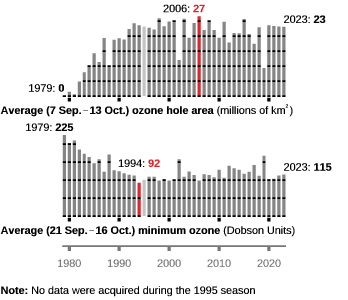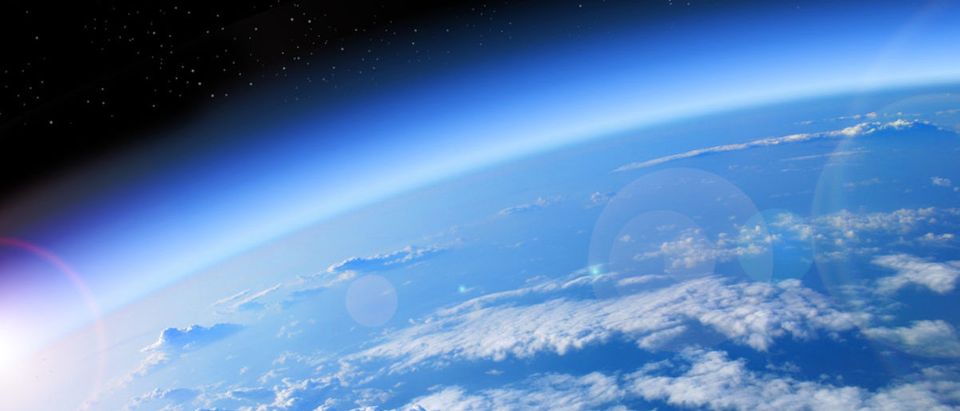The extent of the dreaded “hole” in the Earth’s ozone layer over Antarctica is the smallest it’s been since government scientists began monitoring it nearly three decades ago.
Some attributed the shrunken ozone layer to the ratifying of the Montreal Protocol in the 1980s. In that agreement, countries agreed to phase out ozone-depleting chemicals over time.
It’s an interesting narrative, but NASA said levels of ozone-depleting substances are still high enough to eat away the ozone layer — meaning the record small hole has little to do with United Nations agreements.
“Scientists said the smaller ozone hole extent in 2016 and 2017 is due to natural variability and not a signal of rapid healing,” NASA said in a press release on the ozone hole.
NASA pointed to “an unstable and warmer Antarctic vortex,” which ” helped minimize polar stratospheric cloud formation in the lower stratosphere,” according to a release. These clouds aid chemical reactions that deplete the ozone layer.
The ozone hole peaked on Sept. 11, reaching a size about two and a half times the U.S., according to NASA.
NASA said the “warmer-than-average stratospheric weather conditions” limited the growth of the ozone hole in 2016 and 2017. The ozone hole maxed out at 8.9 million square miles in 2016, slightly below the 10 million square mile average observed since 1991.
“The Antarctic ozone hole was exceptionally weak this year,” Paul Newman, chief scientist for Earth Sciences at NASA’s Goddard Space Flight Center, said in a release. “This is what we would expect to see given the weather conditions in the Antarctic stratosphere.”
The U.S. joined the Montreal Protocol during the Reagan administration, at the height of ozone hysteria. Scientists say the ozone layer could return to 1980 levels by the middle of the 21st Century. Scientists first noticed the ozone hole in 1985.
There are still lots of unknowns when it comes to the Earth’s ozone layer. Our measurements of the ozone layer only go back to 1979, the beginning of the satellite era, and even then NASA and NOAA have only began daily monitoring of the ozone hole in 1988.
The ozone hole over Antarctica “forms during the Southern Hemisphere’s late winter as the returning sun’s rays catalyze reactions involving man-made, chemically active forms of chlorine and bromine,” according to NASA.
The Earth’s ozone layer “acts like sunscreen, shielding the planet from potentially harmful ultraviolet radiation that can cause skin cancer and cataracts, suppress immune systems and also damage plant,” NASA said.
Here’s how the ozone hole has changed over time:

Source: NASA
Follow Michael on Facebook and Twitter
All content created by the Daily Caller News Foundation, an independent and nonpartisan newswire service, is available without charge to any legitimate news publisher that can provide a large audience. All republished articles must include our logo, our reporter’s byline and their DCNF affiliation. For any questions about our guidelines or partnering with us, please contact licensing@dailycallernewsfoundation.org.


